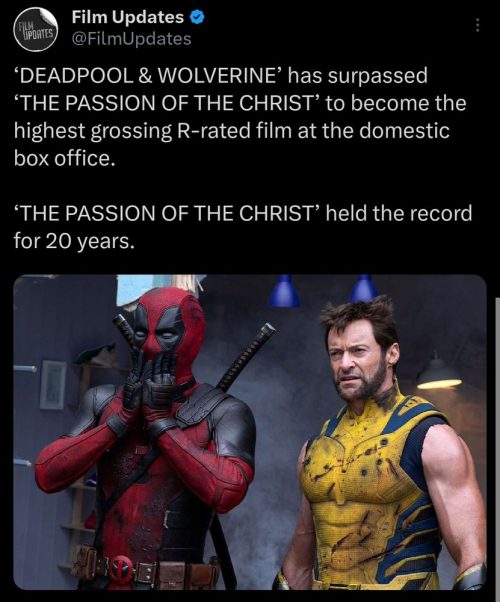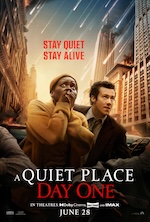This is dismal news, because they are both total crap.

‘DEADPOOL & WOLVERINE’ has surpassed ‘THE PASSION OF THE CHRIST’ to become the highest grossing R-rated film at the domestic box office. ‘THE PASSION OF THE CHRIST’ held the record for 20 years.
I’m sure movie executives are pleased, though. Let’s dive to the bottom!






